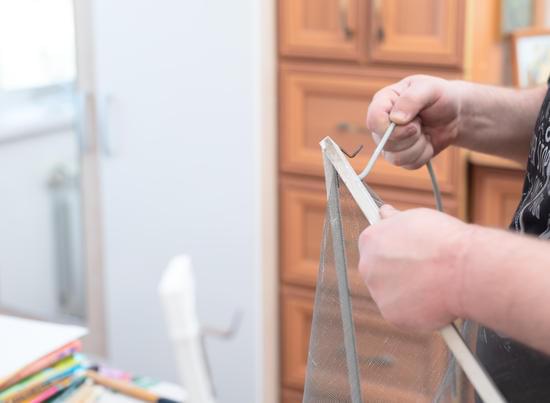Keeping track of home improvements is crucial for homeowners looking to maintain, update, and increase the value of their properties. In this article, we will discuss the various methods and tools that can help you stay organized and informed about your home improvement projects. From creating a detailed binder to utilizing digital apps and tools, we will explore how to effectively keep track of your renovations and upgrades.
Home improvements are not only about enhancing the aesthetics of your living space but also about ensuring its functionality and safety. By maintaining accurate records of your projects, you can easily track the progress, expenses, and any necessary maintenance or repairs in the future. This proactive approach can save you time, money, and stress down the line.
Whether you are planning a minor renovation or a major overhaul, having a system in place to monitor your home improvements is essential. From setting up a budget tracking system to documenting before and after photos for comparison, there are numerous benefits to staying organized throughout the process. Let’s delve into the importance of keeping track of home improvements and explore effective strategies for achieving this goal.
Creating a Home Improvement Binder
When it comes to home improvements, one of the key steps in staying organized is creating a home improvement binder. This physical binder will serve as your central hub for all project-related documents, notes, and plans. By having everything in one place, you can easily reference past projects, track progress, and stay on top of upcoming tasks. Here are some tips on how to set up and maintain a home improvement binder effectively.
Divide Your Binder Into Sections
To keep your home improvement projects organized, divide your binder into sections based on different categories such as project plans, receipts, warranties, paint colors used, and maintenance schedules. This way, you can quickly locate specific information when needed. Use tabs or dividers to separate each section clearly for easy navigation.
Include Important Documents
In your home improvement binder, be sure to include important documents such as contracts with contractors or service providers, permits obtained for renovations, product manuals and warranties for appliances or materials used in the projects. Having these documents readily available can help you troubleshoot issues that may arise in the future and ensure that you have all necessary information at hand.
Update Your Binder Regularly
Keeping track of home improvements requires regular updates to your binder. Make it a habit to file away new receipts, record any changes made during the project’s progress, and update maintenance schedules as needed. By maintaining an up-to-date home improvement binder, you can stay organized and informed about the status of your projects at all times.
Utilizing Digital Apps and Tools for Tracking Progress
When it comes to home improvement projects, keeping track of progress is essential for staying organized and on schedule. In today’s digital age, there are numerous apps and tools available to help homeowners streamline the process of tracking their projects. These resources not only make it easier to monitor progress but also provide a central hub for all project-related information.
One popular option for tracking home improvements digitally is using project management apps such as Trello or Asana. These platforms allow users to create boards and lists to keep track of tasks, deadlines, and updates for each project. By assigning tasks to specific team members or contractors, homeowners can ensure that everyone involved is on the same page regarding project progress.
Another useful tool for tracking home improvements is home renovation software like Houzz or HomeZada. These programs provide features such as budget tracking, project timelines, and customizable checklists to help homeowners stay organized throughout the renovation process. Additionally, some apps offer virtual design tools that allow users to visualize potential changes before committing to a final design plan.
In addition to project management apps and home renovation software, there are also specialized tools designed specifically for tracking home improvement projects. For example, homeowners can use apps like Home DIY, which helps users organize tasks by room and category while providing helpful tips and tutorials along the way. By leveraging these digital resources, homeowners can efficiently manage their home improvement projects from start to finish while keeping all the relevant information in one convenient location.
Establishing a Budget Tracking System for Each Project
When embarking on home improvement projects, one of the key aspects to consider is establishing a budget tracking system for each endeavor. Keeping track of the financial aspect of your projects can help you stay within your set budget and prevent overspending. Here are some ways on how to keep track of home improvements financially:
1. Create a detailed budget breakdown: Before starting any project, it is crucial to create a comprehensive budget breakdown outlining all the expenses involved. This list should include materials, labor costs, permits, and any additional fees that may arise during the course of the renovation.
2. Use a financial tracking app: There are numerous digital tools and apps available that can help you keep track of your expenses and monitor your budget in real-time. Apps like Mint or Expensify allow you to input your expenses, categorize them, and set spending limits to ensure you stay on track.
3. Maintain receipts and invoices: It is essential to keep all receipts and invoices related to your home improvement projects in one central location. This will not only assist you in accurately tracking expenses but also come in handy for tax purposes or in case of warranty claims for items purchased.
By implementing a sound budget tracking system for each home improvement project, you can effectively manage costs, avoid overspending, and ensure that your renovations stay within financial constraints. This level of organization and attention to detail will ultimately lead to successful outcomes and increased satisfaction with your home improvement endeavors.
Documenting Before and After Photos for Comparison
Documenting before and after photos of home improvements is a crucial step in keeping track of the progress and changes made to your living space. Not only do these photos serve as a visual diary of the work done, but they also provide a clear comparison of the transformation that has taken place.
Whether you’re updating your kitchen, renovating your bathroom, or simply sprucing up your living room, having visual evidence of the changes can be incredibly satisfying and motivating.
One effective way to document before and after photos is to create a designated folder on your computer or smartphone for each project. This allows you to easily access and compare the images whenever needed.
Another option is to print out physical copies of the photos and create a scrapbook or album specifically dedicated to showcasing the progress made in each area of your home. Not only will this keep all your photos organized in one place, but it also allows for easy sharing with friends and family who may be interested in seeing your home improvement journey.
By regularly taking before and after photos of your home improvements, you not only have a record of the changes made but also a visual reminder of how far you’ve come. These photos can also be useful when it comes time to sell your home, as they can showcase the care and attention you’ve put into maintaining and upgrading your property over time.
So grab your camera or smartphone, start snapping those pictures, and watch as your home transforms right before your eyes.
Setting Up a Maintenance Schedule for Regular Updates
Creating a Maintenance Calendar
One effective way to stay on top of your home maintenance tasks is by creating a maintenance calendar. This calendar should outline all the regular maintenance tasks that need to be completed throughout the year, such as HVAC system checks, gutter cleaning, roof inspections, and pest control treatments. By scheduling these tasks ahead of time, you can ensure that nothing falls through the cracks.
Using Reminders and Alerts
In this digital age, there are plenty of tools available to help you stay organized with your home maintenance schedule. Utilize reminders and alerts on your smartphone or computer to notify you when it’s time to perform specific tasks. You can set up recurring reminders for tasks that need to be done on a monthly, quarterly, or annual basis, making it easier to stay on track with your home improvements.
Maintaining Detailed Records
Another essential aspect of keeping track of home improvements is maintaining detailed records of all maintenance activities. Keep a log or spreadsheet documenting the date each task was completed, any issues that were identified, and any repairs or replacements that were made.
This information will not only help you track the history of your home improvements but also serve as valuable documentation for future reference or potential resale purposes. By staying organized with your maintenance schedule and records, you can effectively keep track of home improvements and ensure that your property remains in optimal condition.
Tracking Warranty Information for Appliances and Repairs
When it comes to home improvements, one important aspect that often gets overlooked is keeping track of warranty information for appliances and repairs. This is crucial in ensuring that you can easily access warranty details in case any issues arise with the products or services you have invested in. Here are some tips on how to effectively manage and track warranty information for your home:
- Start by creating a dedicated section in your home improvement binder specifically for warranty information. Include details such as the product or service name, purchase date, expiration date of the warranty, and contact information for customer service.
- Utilize digital apps or tools designed for tracking warranties. There are various apps available that allow you to input warranty details, set reminders for expiration dates, and even store copies of receipts or warranty documents digitally.
- Establish a system for organizing physical copies of warranties. Whether you choose to file them alphabetically, by room, or by expiration date, make sure they are easily accessible when needed.
Keeping track of warranty information can save you time and money in the long run. By staying organized and maintaining detailed records of warranties for appliances and repairs in your home, you can ensure that you make full use of the benefits provided by manufacturers and service providers. Remember, proactive management of warranties can help avoid unnecessary costs when unexpected issues arise.
Utilizing Excel or Google Sheets for Detailed Records
Keeping detailed records of your home improvements is essential for tracking expenses, timelines, and the overall progress of your projects. One effective way to do this is by utilizing spreadsheet software such as Excel or Google Sheets. These tools provide a structured format where you can input and organize information related to each home improvement task. By creating separate tabs or sheets for different projects, you can easily access and update data as needed.
In your Excel or Google Sheets document, consider including categories such as project name, start date, end date, budgeted costs, actual costs, materials used, contractors hired, and any additional notes or comments. This comprehensive approach will not only help you keep track of expenses but also serve as a reference point for future renovations or repairs.
Additionally, using formulas and functions within these programs can automatically calculate totals or percentages, providing you with valuable insights into your spending habits and project timelines.
Moreover, with the cloud storage capabilities of Google Sheets, you can access your home improvement records from any device with an internet connection. This allows for greater flexibility in updating information on-the-go and ensures that all pertinent data is securely backed up online.
Whether you are a DIY enthusiast or rely on professional contractors for your home projects, Excel or Google Sheets can be powerful tools in maintaining accurate and up-to-date records of all your home improvements.
| Benefits of Utilizing Excel or Google Sheets | Details |
|---|---|
| Organized Data Entry | Structured format for project details |
| Automated Calculations | Formulas to calculate expenses and timelines |
| Cloud Storage Access | Online backup and accessibility from any device |
Outsourcing Professional Help for Complex Projects
When it comes to home improvement projects that are complex or beyond your skill level, seeking professional help is essential. Hiring contractors, electricians, plumbers, or other specialized professionals can ensure that the job is done correctly and safely. However, managing these professionals and keeping track of their work can be a challenge.
One way to effectively keep track of professional help for complex projects is by creating a detailed contract that outlines the scope of work, timeline, payment schedule, and any warranties or guarantees. This contract serves as a reference point throughout the project and helps in case any issues arise during or after the completion of the work.
Another important aspect of outsourcing professional help for complex projects is maintaining open communication with the service providers. Regular updates on the progress of the project, any unexpected challenges encountered, and changes in plans are crucial for ensuring that everything stays on track. By establishing clear lines of communication from the beginning, you can prevent misunderstandings and delays in the project timeline.
| Aspect | Importance |
|---|---|
| Detailed Contract | Outlines scope of work, timeline, payment schedule |
| Open Communication | Regular updates on progress prevent misunderstandings |
Conclusion
Keeping track of home improvements is essential for homeowners to stay organized and ensure that their investments in their property are well-documented and managed efficiently. By creating a system to track projects, whether through a physical binder or digital tools, individuals can easily access information about past renovations, repairs, and upgrades. This not only helps in maintaining the value of the home but also provides a valuable resource for future reference.
One of the key advantages of keeping track of home improvements is the ability to monitor progress effectively. By establishing a budget tracking system for each project and documenting before and after photos, homeowners can see tangible results of their efforts. Additionally, setting up a maintenance schedule allows for regular updates and preventive measures to be taken, ultimately prolonging the lifespan of the improvements made.
Furthermore, by utilizing Excel or Google Sheets for detailed records and tracking warranty information for appliances and repairs, individuals can have all relevant information easily accessible in one central location. This level of organization not only saves time but also ensures that important details are not overlooked. Ultimately, staying on top of home improvements through proper tracking methods leads to a more efficient and effective management of one’s property.
Frequently Asked Questions
How Do You Prove Home Improvements Without Receipts?
Proving home improvements without receipts can be challenging, but it’s not impossible. One way to provide evidence is by taking before and after photos of the project. Keeping detailed records of the work done, including materials used and invoices from contractors, can also support your claim.
Should You Keep Track of Home Improvements?
Keeping track of home improvements is essential for several reasons. First, it helps increase the resale value of your property by documenting upgrades and renovations. Second, it allows you to accurately calculate any tax deductions or credits related to the improvements. Lastly, it provides a history of maintenance and repairs for future reference.
What Information Should You Record in a Log for Keeping Track of Home Improvement Projects?
When keeping a log of home improvement projects, there are several key pieces of information to record. This includes the date each project was started and completed, detailed descriptions of the work performed, costs incurred (including labor and materials), names/contact information of contractors or professionals involved, any permits obtained, and warranties or guarantees associated with the project.
Having this log organized will help you keep track of your investments in your home over time.

I’m thrilled to have you here as a part of the Remodeling Top community. This is where my journey as an architect and remodeling enthusiast intersects with your passion for transforming houses into dream homes.





